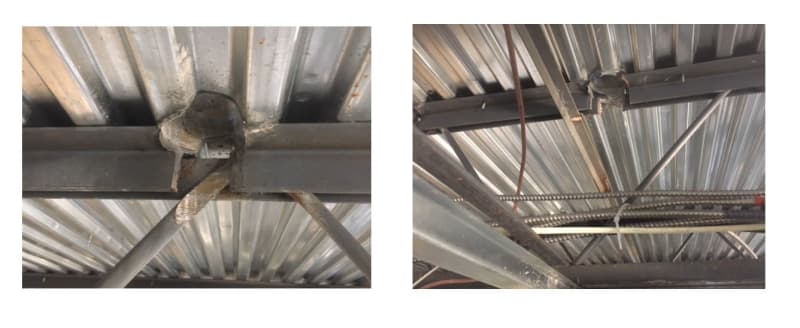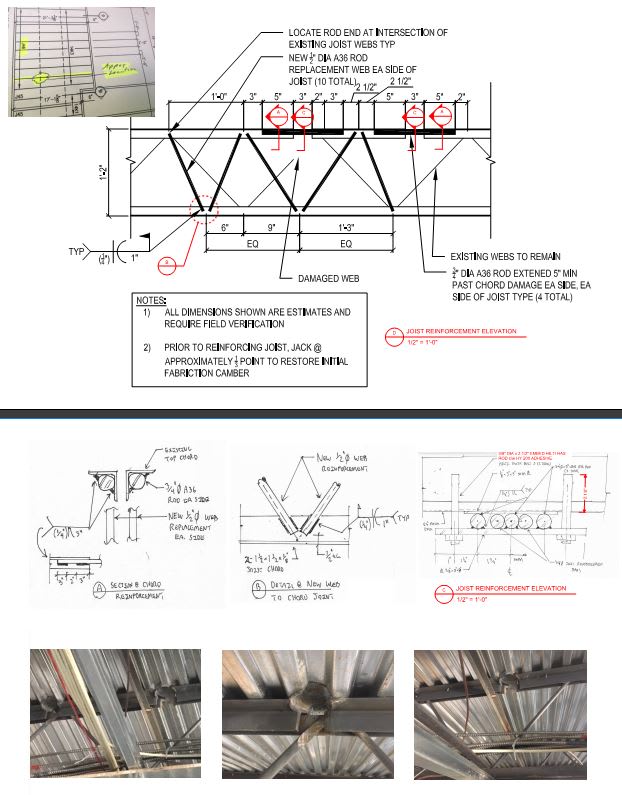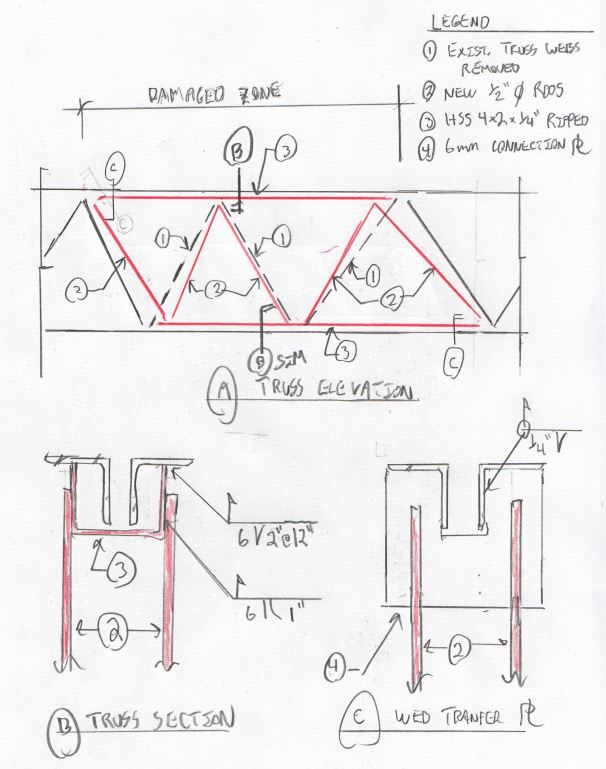A steel joist on one of my projects found itself on the losing end of some plumbing work. We'd originally wanted the joist supplier to tend to the repair but their opinion was that a joist this badly damaged couldn't be repaired. Since I've gone and attempted to repair it anyhow, I thought that it would be beneficial to post the scheme here for critique. See attached PDF, replicated below. Some deets:
- 24' long
- 3" non-composite slab above
- 14" deep
- Uncommonly tight, 32" joist spacing
- Residential floor space above
- No new capacity required. Simply the reinstatement of the original capacity.
- Existing chords are 1.5" x 1.5" x 0.125" angles.
- Existing webs are 1/2" dia rods
- Panel point spacing = 24" classic.
It's tempting to explain my rationale here but:
1) Much of it should be self evident (I hope) and;
2) I don't want to taint the critique with a bunch of upfront "selling".


I like to debate structural engineering theory -- a lot. If I challenge you on something, know that I'm doing so because I respect your opinion enough to either change it or adopt it.
- 24' long
- 3" non-composite slab above
- 14" deep
- Uncommonly tight, 32" joist spacing
- Residential floor space above
- No new capacity required. Simply the reinstatement of the original capacity.
- Existing chords are 1.5" x 1.5" x 0.125" angles.
- Existing webs are 1/2" dia rods
- Panel point spacing = 24" classic.
It's tempting to explain my rationale here but:
1) Much of it should be self evident (I hope) and;
2) I don't want to taint the critique with a bunch of upfront "selling".


I like to debate structural engineering theory -- a lot. If I challenge you on something, know that I'm doing so because I respect your opinion enough to either change it or adopt it.

